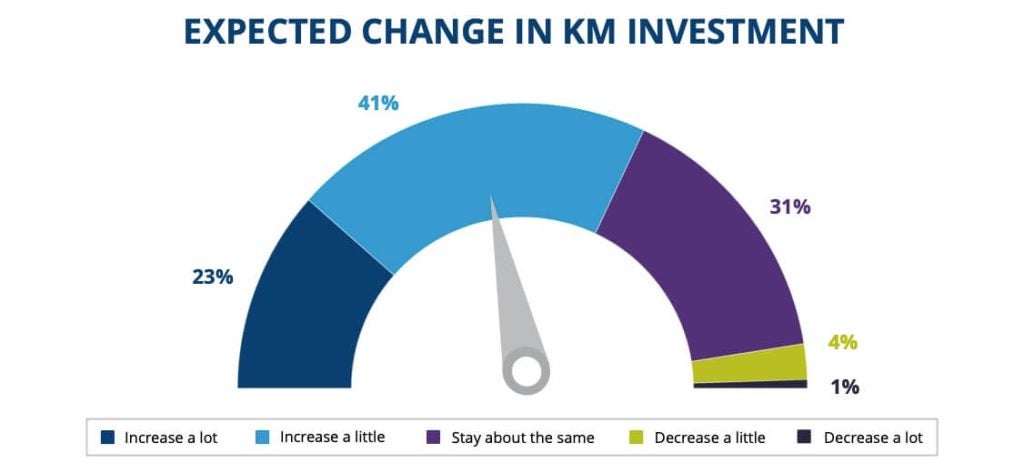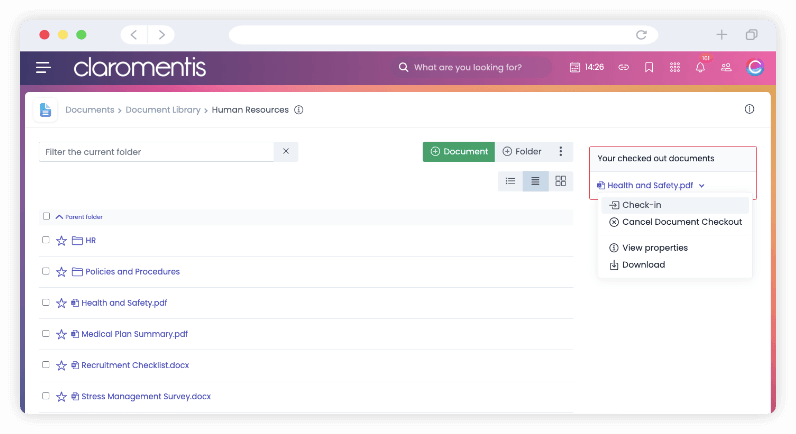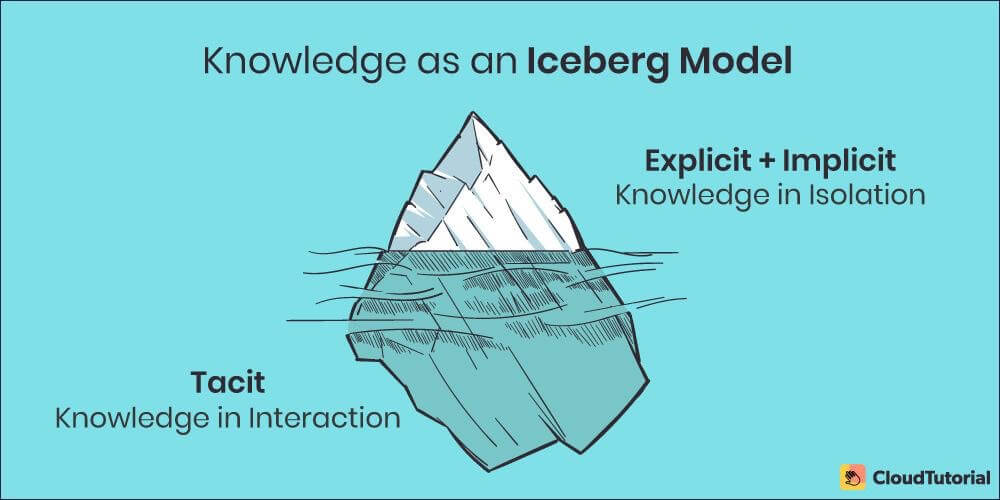It’s never been more important to have the right knowledge sharing tools in place.
Driven by changes in lifestyle and a COVID-19 influenced shift in priorities, the job market is more volatile than ever before. The Office For National Statistics documents that open vacancies in the UK reached a record 1.25 million in December 2021.
This makes sharing knowledge vital to keep employees on the same page, retaining valuable information within the company, and being able to offer customers consistently good service during an uncertain time.
The ultimate goal is to create a workplace that people gravitate towards, with an engaged workforce and strong employee retention as a result.
Equally, if people are leaving (and employees will always come and go, even if it’s at a lower rate than they’re doing right now), it’s vital to capture their knowledge before it’s too late.
Businesses are waking up to the issues this could cause for long-term knowledge retention, which is perhaps why more than half are planning to increase their knowledge management investment in 2022, according to a KM World survey.
Notably, over one in five (23%) reported a ‘significant’ expected increase in investment.

(Source: kmworld.com)
For this investment to pay off, however, you need to understand how to leverage your knowledge management system effectively. Misusing key features, sporadic document management or underusing community forums for example, will limit the efficacy of even the best knowledge management software.
Here’s how you can use your knowledge management software to reduce knowledge gaps and encourage knowledge sharing across teams
Begin by encouraging interpersonal workforce relationships
Question: What’s the most powerful knowledge management solution out there? Answer: A knowledge sharing culture.
If different teams, departments and locations don’t even think to share knowledge outside of their immediate network, no amount of new software will overcome the delays, silos and frustrations that follow.
So, before investing in the best knowledge management software you can find, think about how you can foster human connections between teams, build bridges and create a workplace environment in which knowledge sharing is encouraged and celebrated.
This could be as simple as running team mixers or social clubs, or setting up employee recognition initiatives to increase visibility. Open invites to team stand-ups are also a useful tool for cross team collaboration.
If your workplace is now hybrid or entirely remote, this is even more important. Regular video catch ups and intranet messenger tools are a great way to build a culture based around circulating internal knowledge. This creates the right environment for an effective knowledge sharing culture.
A modern intranet is a powerful tool in this regard – look for key features like two-way publishing, social sharing and commenting to draw remote workers in.
Create a central knowledge base for all internal teams
One immediate way to improve efficiency is to create a central repository for all key procedural documents your employees might need, which ensures employees don’t get held up looking for key information, as it’s always instantly discoverable and accessible. Good document management also removes redundant effort in managing separate channels for separate teams (for example, Google Docs for some information and an intranet for others).
Consider offering easy access to the following, via one centralised hub:
- Contractual documentation
- Technical documentation
- User manuals
- Other relevant information like order forms and policy documentation

Centralise key information using a document management system like Claromentis’
If you’re documenting procedural knowledge via Knowledge Base articles or Google Drive, use third party integrations with your intranet homepage to make everything immediately accessible.
To improve productivity even further, you can also use your internal knowledge base software to share multimedia lessons with your workforce. Not everyone works well with large swathes of text. Including audio/video content for your onboarding process and other important procedures increases productivity and ensures you’re catering for diverse employee needs.
Make knowledge transfer more conversational
Centralised repositories are great for storing contractual documentation and offering instant access to basic information, but they have their limitations.
Logging onto Knowledge Base (or equivalent) every time you need a quick answer to a question is time consuming and inefficient, and there are some types of organisational knowledge that simply aren’t easy to document.
Broadly speaking, internal knowledge falls into one of three categories:
- Explicit knowledge: knowledge covering topics that are easy to systematically document – for example how to login to the content management system
- Implicit knowledge: learned skills or know-how, often practical applications of explicit knowledge
- Tacit knowledge: intangible information that is difficult to document directly, such as things that are picked up without being said. For example, “this client prefers that we contact them in the afternoon” or “it’s best to provide our graphic designer with a week’s lead time because their workload is heavy at this time of year.”
Whilst explicit and implicit knowledge of company procedures is the most visible, your well of tacit knowledge is larger and arguably more important to maintain.

(Source: thecloudtutorial.com)
It’s always easier to ask questions and receive direct, instant answers to your query than it is to trawl through pages of Knowledge Base articles. It’s also faster and will aid the flow of valuable tacit knowledge throughout your organisation – all too often, this is lost when key employees leave.
That’s why it’s essential for you to configure your knowledge management software to encourage direct, conversational interactions that help pass tacit knowledge on.
You can achieve this by:
- Setting up discussion forums in your digital workspace so that employees can ask questions to a general audience
- Creating an employee directory so that employees can reach out to others with specific queries quicker
- Providing up to date collaboration tools for remote workers that allow them to work seamlessly alongside
Make use of knowledge analytics tools
Are people actually logging onto your knowledge management software? If not, why not? Which of your Knowledge Base articles are the most read? Are employees spending too long trying to find the right information?
Modern knowledge management solutions come with a range of real-time analytics, allowing you to pinpoint problem areas and take action to correct them. This prevents basic issues, such as a non-intuitive interface or lack of knowledge about your software’s advanced features.
Knowledge management solutions also help you identify any potential organisational knowledge gaps, so you can work on strategies to create, retain and document this information.
Ultimately, you want your knowledge management tool to be as effective as possible. A long-term commitment to tracking key metrics ensures your knowledge management system is working efficiently, and that your employees are more productive as a result.

![[FREE GUIDE] How to Boost Employee Engagement Across Your Business](https://no-cache.hubspot.com/cta/default/5025095/5694e0cd-c681-4bb5-8551-e3868ed9f392.png)




